Johto is a region connected to the western part of Kanto. It was introduced in Generation II, Pokémon Gold, Silver, and Pokémon Crystal, later seen in their remakes, HeartGold and SoulSilver. The third, fourth, and fifth seasons of the anime were also set there. In the games, all its cities either have plant-themed or color-themed names. Johto is mainly based on Western Japan, especially the Kansai region of Japan, with some elements of Chūbu and Shikoku. There are old-fashioned cities reminiscent of Nara and Kyoto and a modern commercial city reminiscent of Osaka. Some inhabitants speak the Kansai dialect in the Japanese releases of the game.
The mythology surrounding the Johto region features Ho-Oh, the Rainbow Pokémon guardian of the skies, and Lugia, the Diving Pokémon guardian of the seas, who previously perched on the Bell and Brass Towers respectively in Ecruteak City. When the Brass Tower burned down in a storm, Lugia flew away, and three Pokémon died in the process. Ho-Oh revived these Pokémon, creating Raikou, Entei, and Suicune. Lugia's home, the Whirl Islands, were also created when the Pokémon dispelled a war over a singular island, splitting it into four islands and making them its home, producing powerful whirlpools to protect itself. Celebi, the Time Travel Pokémon, also calls Johto its home, residing in the Ilex Forest where it brings Pokémon and Trainers forward and back in time.
100 previously unknown Pokémon reside in Johto. In the Generation II games, the player character's hometown is New Bark Town, where they can choose either Chikorita, a grass type, Cyndaquil, a fire type, or Totodile, a water type as his/her first Pokémon.
In anime, Johto is the home region of Jimmy and his friends.
Geography
The terrain of Johto is similar to that of Kanto, since the two regions are connected, with a jagged mountain range in the northeast, descending to a boundless ocean in the southwest.
Locations
Cities and towns
- New Bark Town (based on Shizuoka City)
- Cherrygrove City (based on Toyohashi City)
- Violet City (Nara City and Aichi City)
- Azalea Town (Wakayama City)
- Goldenrod City (based on Osaka City)
- Ecruteak City (based on Kyoto City)
- Olivine City (based off Kobe City)
- Cianwood City (based on Naruto City)
- Mahogany Town
- Blackthorn City
Areas of Interest
- Ruins of Alph
- Slowpoke Well
- Union Cave
- Ilex Forest
- Radio Tower
- National Park
- Tin Tower/Bell Tower
- Burned Tower
- Sprout Tower
- Whirl Islands
- Safari Zone HGSS
- Dark Cave
- Mt. Mortar
- Lake of Rage
- Dragon's Den
- Tohjo Falls
- Indigo Plateau
- Battle Frontier HGSS
- Mt. Silver
- Sinjoh Ruins HGSS (accessible only after receiving Wi-Fi Event Arceus)
Routes
Johto's routes start where Kanto left off: routes in Johto are numbered 29–48, where Kanto's are 1-28.
Pokémon League
The Johto League is the greatest aspiration of all Trainers. Because they are neighboring regions, Johto and Kanto share the same Elite Four, located at Indigo Plateau. The player character must have the required eight Gym Badges to enter.
Gym Leaders
| Name | Settlement | Type | Signature Pokémon | Badge |
|---|---|---|---|---|
 Falkner |
Violet City | 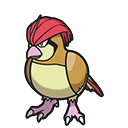 ( ( ) )
|
Zephyr Badge | |
 Bugsy |
Azalea Town | Bug | 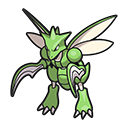 ( (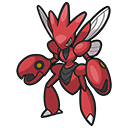 ) )
|
Hive Badge |
Whitney |
Goldenrod City | Normal | 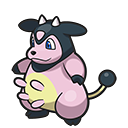
|
Plain Badge |
Morty |
Ecruteak City | Ghost | 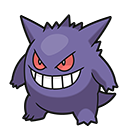
|
Fog Badge |
 Chuck |
Cianwood City | Fighting | 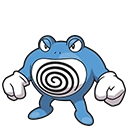
|
Storm Badge |
Jasmine |
Olivine City | Steel | 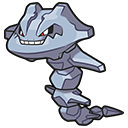
|
 Mineral Badge |
Pryce |
Mahogany Town | Ice |  ( (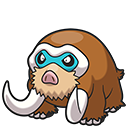 ) )
|
Glacier Badge |
 Clair |
Blackthorn City | Dragon | 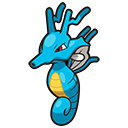 ( ( ) )
|
Rising Badge |
Elite Four
| Name | Type | Signature Pokémon |
|---|---|---|
 Will |
Psychic | 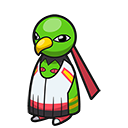
|
 Koga |
Poison | 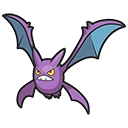
|
 Bruno |
Fighting | 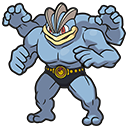
|
 Karen |
Dark |  / /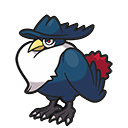 / /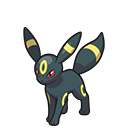
|
Champion
| Name | Type | Signature Pokémon |
|---|---|---|
 Lance |
Dragon | 
|
Trivia
- Johto and Kanto are the only regions shown to be connected to another.
- Following the tradition, the Johto region is based on a real-world region of Japan, the Kansai region, just as Kanto is based on the real Kanto region in Japan.
- Johto was the first region to introduce areas to plant Berries.
- Johto is the only region to display a new female main character when the game returned for a newer system release.
- However, in the Black and White sequels, there was a new female main character to play as.
- Johto lacks many elements that all other regions have. Most of these omissions are due to it sharing them with Kanto, which could be visited in the same games, and the fact that recycling old concepts have not become the norm yet in the games. Therefore, it is the only region without:
- prior to Generation VIII, a museum.
- a graveyard or any type of burial ground area.
- prior to Generation IV, a true regional Pokédex or a proper Safari Zone.
- its own Pokémon League (although the anime gives it the Silver Conference).
- a notable Water-type specialist.
- Johto shares its Storage System developer and villainous team with Kanto.
- All of the cities in Johto are named after plants in addition to colors.
- It's the only region when Ash Ketchum did not meet a new travelling companion and stayed with his original ones.
- Johto also has the shortest Victory Road, even though it resides in the Kanto region.
- Up until Generation VII, Johto was the only region that did not have its own set of Fossil Pokémon.
| Characters · Pokédex | |
| Settlements | |
| Pokémon League | |
| Routes | |
| Islands | |
| See also | |
| Regions | |
| Locations · Pokédex | |
| Gym Leaders | |
| Frontier BrainsHGSS | |
| Others | |
| See also | |
| Characters | |
| Core series | |
|---|---|
| Others | |
| Pokémon the Series | |